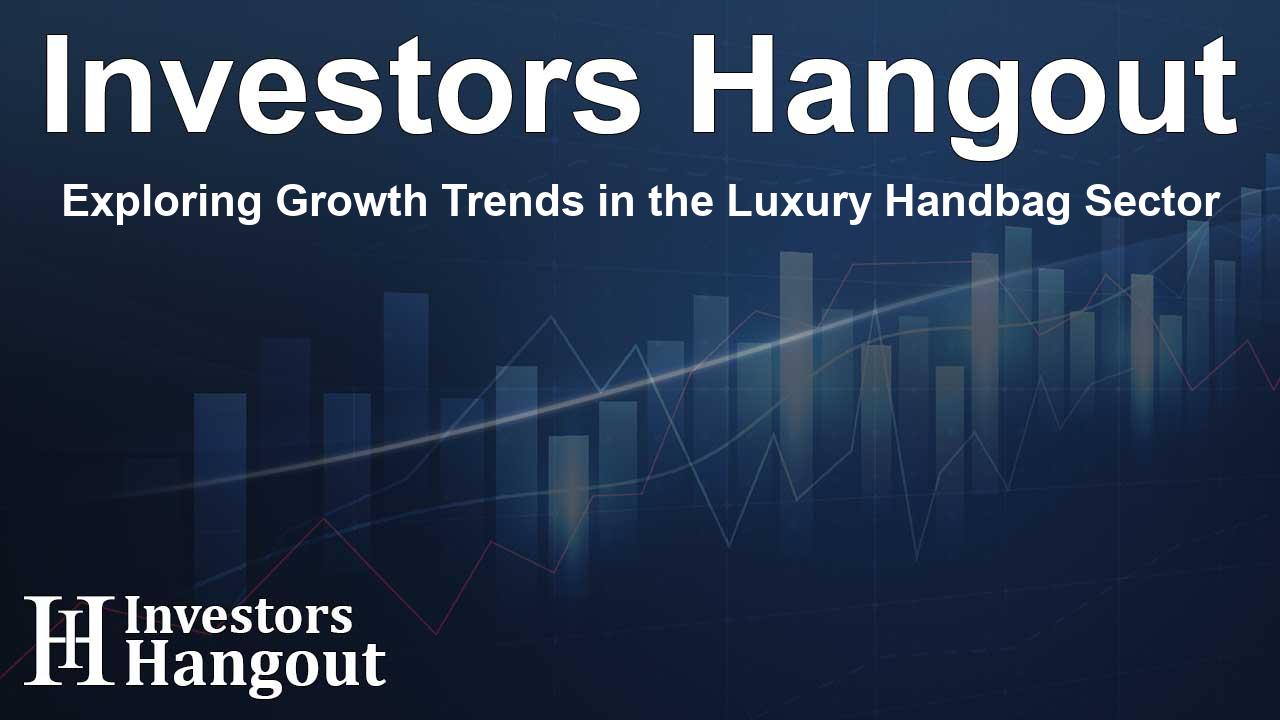Exploring Growth Trends in the Luxury Handbag Sector

Market Insights into Luxury Handbags
The luxury handbag market is witnessing a remarkable transformation, projected to grow significantly over the next decade. Current estimates suggest that this market will escalate from USD 25,642.20 million to an impressive USD 47,237.70 million by 2034, reflecting a robust compound annual growth rate (CAGR) of approximately 6.30%. This growth is fueled by consumer demand for sustainable, high-quality, and functional luxury products.
Shifts in Consumer Behavior
With the rise of social media and specialized luxury marketplaces, brands are shifting toward direct-to-consumer sales channels. This strategy not only enhances branding control but also improves customer relations, offering a personalized shopping experience that meets the evolving expectations of modern luxury consumers.
Collaboration and Innovation
Brands are increasingly leveraging strategic partnerships with artists, influencers, and other organizations. These collaborations are instrumental in expanding their reach and enhancing brand visibility while driving innovation. By aligning products with unique artistic visions and trendy aesthetics, brands can effectively tap into new audiences and elevate their market presence.
Growing Appeal of Pre-Owned Handbags
The surge in affordability, coupled with environmental consciousness, is propelling the growth of the pre-owned luxury handbag segment. Brands are actively engaging with resale platforms and establishing certified pre-owned programs, tapping into a consumer base that values vintage and limited-edition designs.
Technological Integration in Handbag Design
Recent technological advancements are significantly altering the landscape of the luxury handbag market. With augmented and virtual reality, brands can provide immersive shopping experiences that allow potential buyers to visualize their products in a new light. Additionally, influencer marketing and social media play pivotal roles in increasing brand awareness and consumer engagement.
Key Market Trends
Several key trends are shaping the luxury handbag market: e-commerce and multichannel shopping have revolutionized retailing, allowing seamless shopping experiences across various platforms. Personalization options such as bespoke designs and engraving are becoming more prevalent, catering to consumers looking for unique luxury goods.
Sustainability Taking Center Stage
As sustainability continues to resonate with consumers, brands are incorporating recycled and upcycled materials into their offerings. The demand for ethically produced goods and the growing interest in vintage items are driving a significant shift in brand strategies.
Regional Growth Insights
Insights reveal varied growth rates across different regions, with the luxury handbag market in North America, Europe, and Asia Pacific showing promising trends. For instance, the demand for luxury handbags in Asia is driven by a combination of rising disposable income and changing consumer preferences towards luxury items.
Prominent Market Challenges
Despite the optimistic growth forecast, the luxury handbag sector faces several challenges, including the prevalence of counterfeit products and intense market competition. Economic uncertainties may also affect consumer spending habits, posing risks to growth trends.
Competitive Landscape
The competitive landscape of the luxury handbag market remains dynamic, with key players continuously innovating to retain their market share. Notable brands like Louis Vuitton, Gucci, Chanel, and Hermes are setting the pace for innovation and luxury experiences.
Frequently Asked Questions
1. What is driving the growth of the luxury handbag market?
The growth is primarily driven by increased consumer demand for high-quality, sustainable, and functional luxury products alongside the rise of e-commerce.
2. How is technology impacting the luxury handbag market?
Technology is enhancing customer experiences through augmented and virtual reality, allowing for immersive product showcases and improved shopping journeys.
3. What trends are influencing consumer preferences in luxury handbags?
Key trends include a shift towards sustainable materials, personalization options, and the growing appeal of pre-owned luxury handbags.
4. What challenges does the luxury handbag market face?
Challenges include counterfeiting, intense competition, and potential economic fluctuations that could impact consumer spending.
5. Which brands are major players in the luxury handbag market?
Key players include Louis Vuitton, Gucci, Chanel, and Hermes, all known for their innovation and market influence.
About The Author
Contact Ryan Hughes privately here. Or send an email with ATTN: Ryan Hughes as the subject to contact@investorshangout.com.
About Investors Hangout
Investors Hangout is a leading online stock forum for financial discussion and learning, offering a wide range of free tools and resources. It draws in traders of all levels, who exchange market knowledge, investigate trading tactics, and keep an eye on industry developments in real time. Featuring financial articles, stock message boards, quotes, charts, company profiles, and live news updates. Through cooperative learning and a wealth of informational resources, it helps users from novices creating their first portfolios to experts honing their techniques. Join Investors Hangout today: https://investorshangout.com/
The content of this article is based on factual, publicly available information and does not represent legal, financial, or investment advice. Investors Hangout does not offer financial advice, and the author is not a licensed financial advisor. Consult a qualified advisor before making any financial or investment decisions based on this article. This article should not be considered advice to purchase, sell, or hold any securities or other investments. If any of the material provided here is inaccurate, please contact us for corrections.
